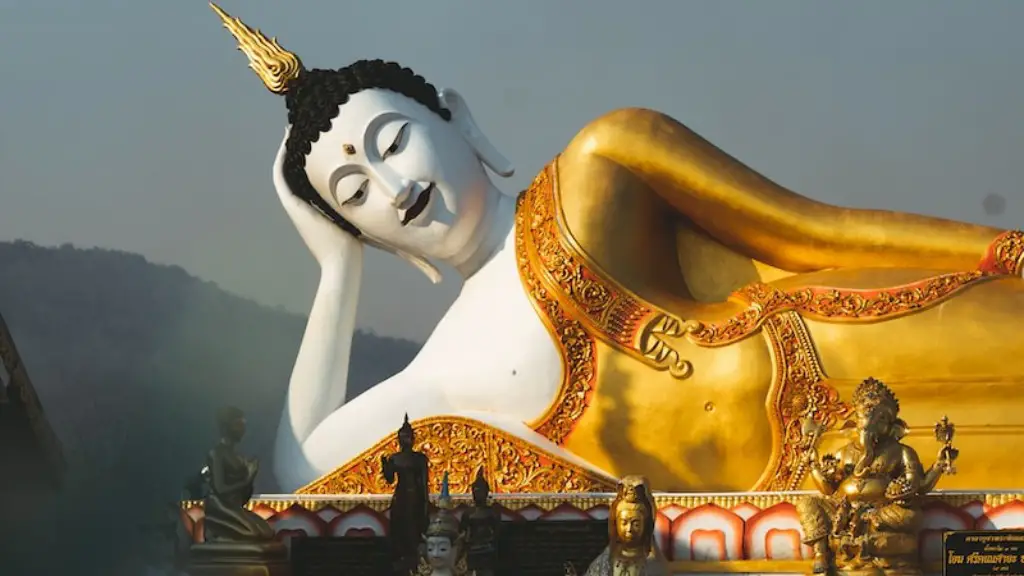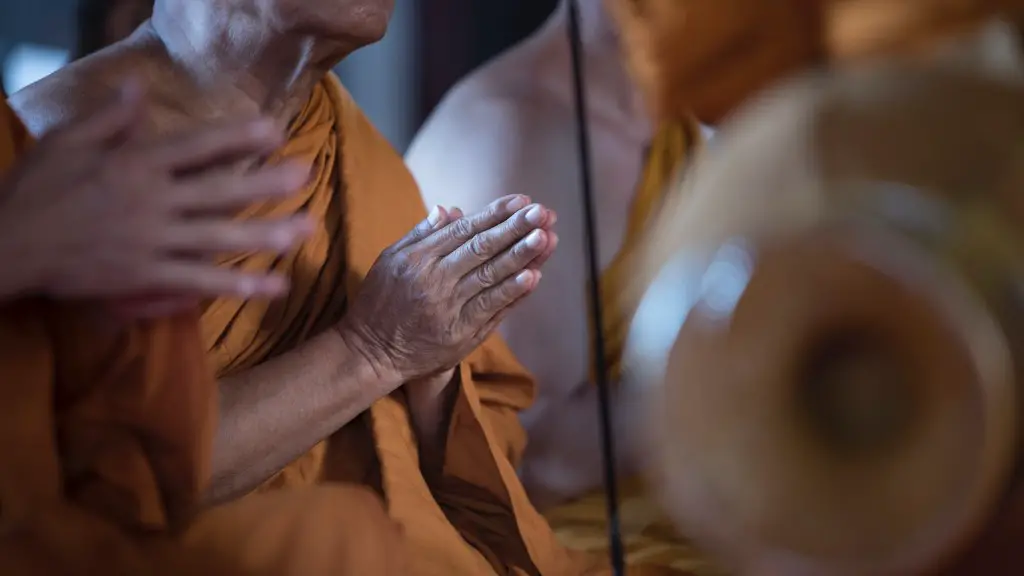Hinduism is one of the oldest and most diverse religions in the world, and its principles and beliefs shape the lives and customs of millions of devotees across India and beyond. While there is no single scripture or set of tenets that governs all Hindu believers, there are certain core principles and codes that have remained central components of the faith for centuries.
One of the most foundational tenets of Hinduism is Ahimsa, or non-harming. Ahimsa is an extension of the broader Hindu belief in the sanctity of all life, no matter what form it takes. Rather than resorting to violence or destruction, Hindus emphasize finding constructive, compassionate ways to solve difficult problems. An ethic of equality also lies at Hinduism’s core, meaning all beings are equally worthy of respect, regardless of caste, creed, or gender.
Another major part of Hinduism is Dharma, or righteousness. Dharma is sometimes defined as a cosmic law, often understood as a kind of universal precept of justice and virtue. Devout Hindus strive to live according to dharma through acts of generosity, kindness, and integrity. Dharma is different for each individual, as emphasized by the belief that all human beings have an individual purpose in life.
Karma is also an important concept in Hinduism, often defined as the moral law of cause and effect. For example, a person who commits an act of kindness will, in turn, receive positive karma in the form of good fortune or happiness, as if the universal forces of justice recognize and reward their virtuous behaviour. On the other hand, a cruel or harmful act will result in bad karma, creating a cycle of suffering and unhappiness.
Moksha, or salvation, is another prominent Hindu belief. Moksha is a spiritual liberation from the cycle of reincarnation, a freedom from the transient joys and sorrows of the world. Hindus believe that by engaging in good karma, such as through acts of selfless service, an individual can eventually achieve moksha and become united with Brahman, the ultimate reality and source of all existence.
Finally, Hinduism also emphasizes Bhakti, or devotion. This means that believers put their faith and trust in a higher power and approach divinity through love and awe. Bhakti is a form of worship that can be expressed through rituals such as offering gifts or prayers, chanting mantras, and making pilgrimages to holy sites. This spiritual practice helps devotees experience a deep connection to the divine, often resulting in inner peace and contentment.
The Purusharthas
The Purusharthas are essential Hindu ideals that prescribe how individuals should live in order to pursue a meaningful life. They consist of four distinct goals: Dharma, Artha, Kama and Moksha. Dharma refers to pursuing right action: a moral and ethical life outlook, what would later be called Dharma Shastra, where a ruler should not distribute justice based on partiality or emotions. Artha is pursuing worldly prosperity and material satisfaction, doing so responsibly and sustainably. Kama is pursuing pleasure, joy and sensual fulfillment, maintaining harmony with others and the environment. Last but not least, Moksha is one’s liberation from the cycle of life, death and rebirth.
Adhering to the Purusharthas also means having a sound, balanced approach to life. Rather than become attached to any single aspect, devotees are encouraged to strive for a holistic union of all four elements. As a result, adherents can gain physical and spiritual satisfaction from the journey itself, rather than the ultimate destination.
In order to do this, Hindus must understand the law of karma and practice ahimsa. This protective law of morality states that whatever action is taken, be it good or bad, will contribute to the formation of a person’s character. Ahimsa is the practice of non-violence and non-harming of any kind. Together, these two principles point to a higher, more virtuous way of living, and helps adherents develop a greater level of spiritual awareness.
The Caste System
The caste system plays an important role in Hinduism and is regarded as an integral part of the faith. This reinforced societal system divides Hindus into four distinct groups, or varnas. Each varna pursues their own duty and responsibility, allowing for a harmonious, unified Hindu community. Brahman are spiritual priests and teachers, Kshatriya are warriors, Vaishya are merchants and farmers, and Shudras are labourers and service providers.
The caste system is often seen as a divisive and exclusionary structure, but it also provides a hierarchical approach to living that many Hindus find comforting. It connects individuals with the greater Hindu community and reinforces the traditional roles that members of each varna should adhere to, such as learning and teaching, leading and protecting, and producing and trading. There are also subcastes, or jati, which provide more specific designations based on profession, economic status, family background and other criteria.
In modern Hinduism, caste distinctions and values are transforming, with some believers rejecting the traditional model altogether. However, the core Bhagvad Gita scripture still upholds the caste system and its values and is seen as an essential source of spiritual knowledge and ethical guidance. Through its teachings, adherents are encouraged to develop a sense of social responsibility and to carry out the duties assigned to their respective varna.
Samsara and Transmigration of Soul
Hinduism also believes in the concept of samsara, which is an inescapable cycle of life and death. Hindus believe that death is not the end, but rather a transition from one body to another, based on the actions of the previous life. This is known as the transmigration of soul, or reincarnation. As such, each life is seen as another opportunity to work towards moksha: liberation from the cycle of death and rebirth, and reunion with the Ultimate Reality.
This belief has led to a deep appreciation of mortality within the Hindu faith. Adherents believe that life and death are intertwined processes and are to be respected and appreciated. Rather than fear death, Hindus turn to gestures of release and surrender, such as providing a final offering to the departed, or performing a ceremony to guide the soul in its journey.
At the same time, samsara encourages devotees to cherish life and its experiences. Hindus place a strong emphasis on living in the present moment and on pursuing activities that lead to spiritual growth, rather than focusing on the material or fleeting pleasures of the world.
Meeting the Hindu Deities
Hinduism has a rich pantheon of gods and goddesses, who often personify various aspects of the divine. Each deity is said to possess a unique set of powers and attributes, and the different gods and goddesses often interact with one another in complex ways. Adherents often recognize the existence of each deity and use mythological stories to illustrate their teachings on morals, ethics and life.
Popular Hindu deities include Vishnu, the preserver of creation, and Shiva, the unifier of dualities. Brahma is often seen as the creator, while Lakshmi is the goddess of wealth and prosperity. Krishna, an incarnation of Vishnu, is seen as a divine guide who embodied love and compassion. Other popular figures include the Vedic gods Indra, Aditi, and Mitra, and the goddess Durga, who is seen as a protector and symbol of strength in times of danger.
Devotees often connect with these deities through a range of spiritual practices: meditation, chanting mantras, worshipping images, and offering gifts and prayers. These practices help believers cultivate a relationship with the divine, often ultimately leading to greater inner peace and contentment.
Rituals and Festivals
Hinduism has an array of rituals and festivals that honor the gods, goddesses and sacred stories of the faith. One of the most significant festivals is Diwali, which is a five-day celebration of the return of Lord Rama and his wife Sita from exile. Observants mark the occasion by lighting lamps and candies, wearing new clothes, feasting, and exchanging gifts.
Other popular festivals include Dussehra, which celebrates the triumph of good over evil, and Holi, which is a joyous celebration of togetherness and renewal. These special days often contain a range of rituals and festival activities, such as music, singing and dancing, that give devotees an opportunity to push boundaries and express themselves without feeling judged or restricted.
Many Hindus also mark family and community-specific rituals such as weddings, naming ceremonies, and housewarmings. These rituals often involve prayer, offerings, and decorative ceremonies that are meant to bring good fortune, protection and blessings to all those involved.
Conclusion
Hinduism is a complex and varied faith, with a range of beliefs, principles, rituals and practices that have guided believers throughout its storied history. Its core pillars – Ahimsa, Dharma, Karma, Moksha, Bhakti, the Purusharthas, the Caste System, Samsara and the Transmigration of Soul, meeting Hindu deities, and participating in rituals and festivals – are all integral components of a Hindu’s spiritual journey. By adhering to these teachings, Hindus can strive for moksha, or liberation from the cycle of death and rebirth, making sense of both life and death as an interconnected process.

